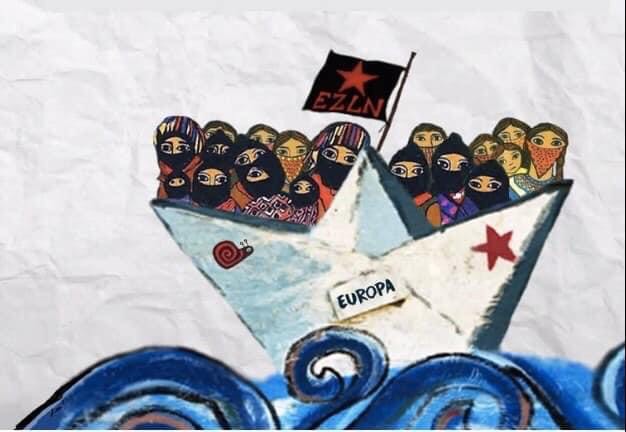
By Raúl Romero*
In 1994, when the “fall of socialism” and the “end of history” were imposed as official global narratives and neoliberal capitalism was offered as the only way, the “Ya basta” launched by the organized Mayan people of the Zapatista Army of National Liberation (EZLN) resounded strongly in México, Latin America and in much of the world.
The EZLN provided discourse and hope to an entire generation that soon rearticulated the resistance to a global level. Militants, artists, intellectuals and people from all over the world came to infect themselves with the indigenous rebellion, travelling all the way to the Lacandón jungle. The slogan “Another world is possible”thus became the emblem for a new wave of global mobilizations. The struggle against neoliberalism and in defense of humanity that stretched across the planet, found one of its primary bastions in the state of Chiapas.
In Seattle, en Genoa, en Porto Alegre, and many other places where the anti-globalization movement was present, the emblem of Zapatismo was made manifest.
Many years have passed since then. Many movements and other trials of alternative societies to capitalism have been built. Among all of them, the emancipatory project that the Zapatistas have built and are constantly updating continues to stand out.
This past October, in the midst of the pandemic, the EZLN announced that “various Zapatista delegations, men, women, others of the color of the earth, will go out to travel the world, we will walk or sail to the remote soils, seas and skies, not seeking difference, nor superiority, nor the affront, much less the apology and the pity. We will go to find what makes us equal.”
As their first destination, the Zapatista delegation will go to the Other Europe, over there where the Sami people, who historically have raised and herded reindeer, and have their territory between Norway, Sweden, Finland, and Russia, are today resisting dispossession and the effects generated by wind farms, mining, gas and oil extraction, as well as the the construction of the Arctic Train, a high-speed train that will strengthen the Arctic Corridor and promote trade between Europe and Asia.
In that Other Europe, some peoples and organizations of Italy have coordinated the No-TAP movement in order to confront the Trans Adriatic Pipeline, a project designed to carry gas from Azerbaijan to Europe. No-TAP points out that it was born “for the protection and safeguarding of territories,” as well as for “the self-determination of the populations that believe in a model of sustainable development, different from that which is imposed, against the financial speculation to the detriment of the communities.”
Also in this Other Europe, and more precisely in Notre-Dame-des Landes, in France, is the population that defended its territory against the attempt, on the part of the government, to build an airport. Farmers, townspeople and activists unleashed one of the most emblematic struggles in the recent history of France, spawning one of the largest territorial occupations in Europe today, and declaring the territory as a Zone to Defend (ZAD). With anti-capitalist and environmental approaches, the ZAD became a reference point for other struggles.
The list is long: in the UK, the resistance against the HS2 High Speed Train Line; in Greece, the movement for the occupation of houses and buildings; in the Spanish state, the historic struggles of the Basque people, of the General Confederation of Labor, and of the anti-capitalist organizations in Madrid.
Throughout the world we observe what Adolfo Gilly and Rhina Roux analyzed in their book, El Tiempo del Despojo (Time of Plunder): “what we are living through can thus be seen as a new historical phase of universal plunder of common goods, the privatization of what used to belong to everyone, the global redistribution of land income, and the surplus value generated by living labor.”
The time of plunder is advancing and everything points to its intensification in Mexico and in the world as a response to the pandemic. Coordinating the struggle at a global scale is urgent, not only for the “survival” of humanity, but in order to finish building the new world of which there are already signs.
At 27 years of its public appearance, at 27 years of betting on life, the sciences and the arts, the EZLN today proposes a new challenge: to go out and find oneself with others that, throughout the world with resistance and rebellion, are building a new world. The little girl Esperanza Zapatista said it well: “that is our mission: to be a seed that seeks other seeds.”
*Sociologist
This article was originally published in Spanish in La Jornada .on January 2, 2021. https://www.jornada.com.mx/notas/2021/01/02/politica/el-ezln-y-la-otra-europa/ This English interpretation has been re-published by Schools for Chiapas.
